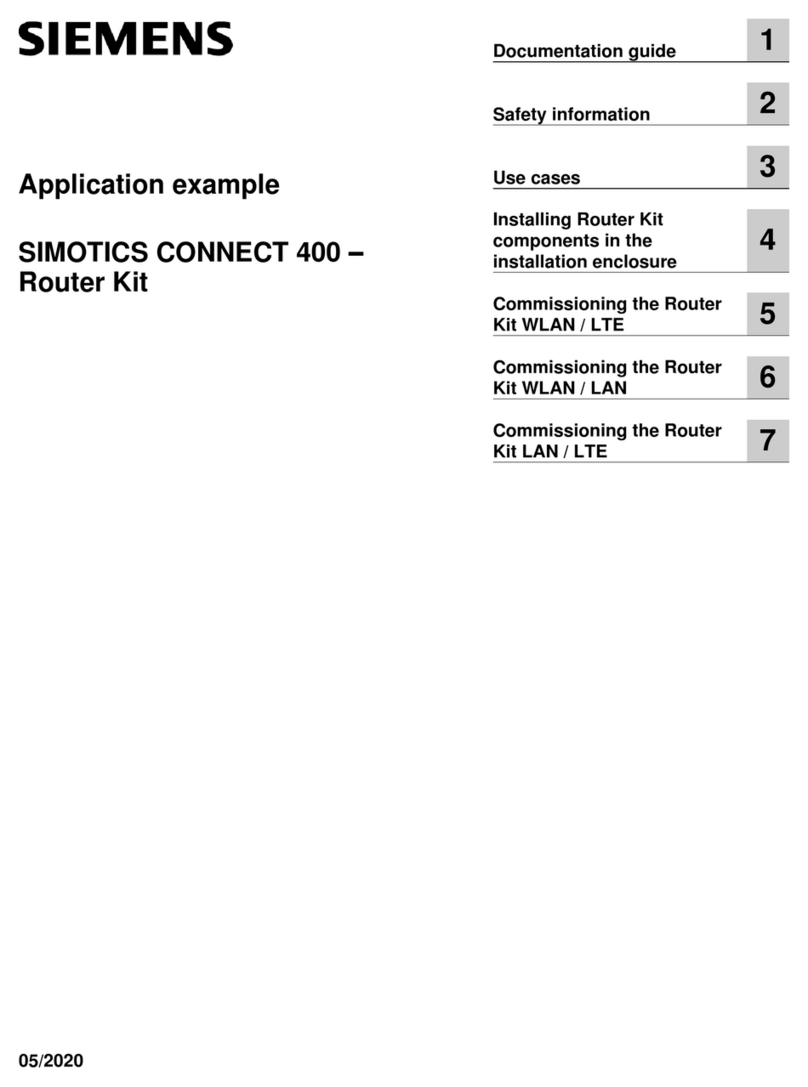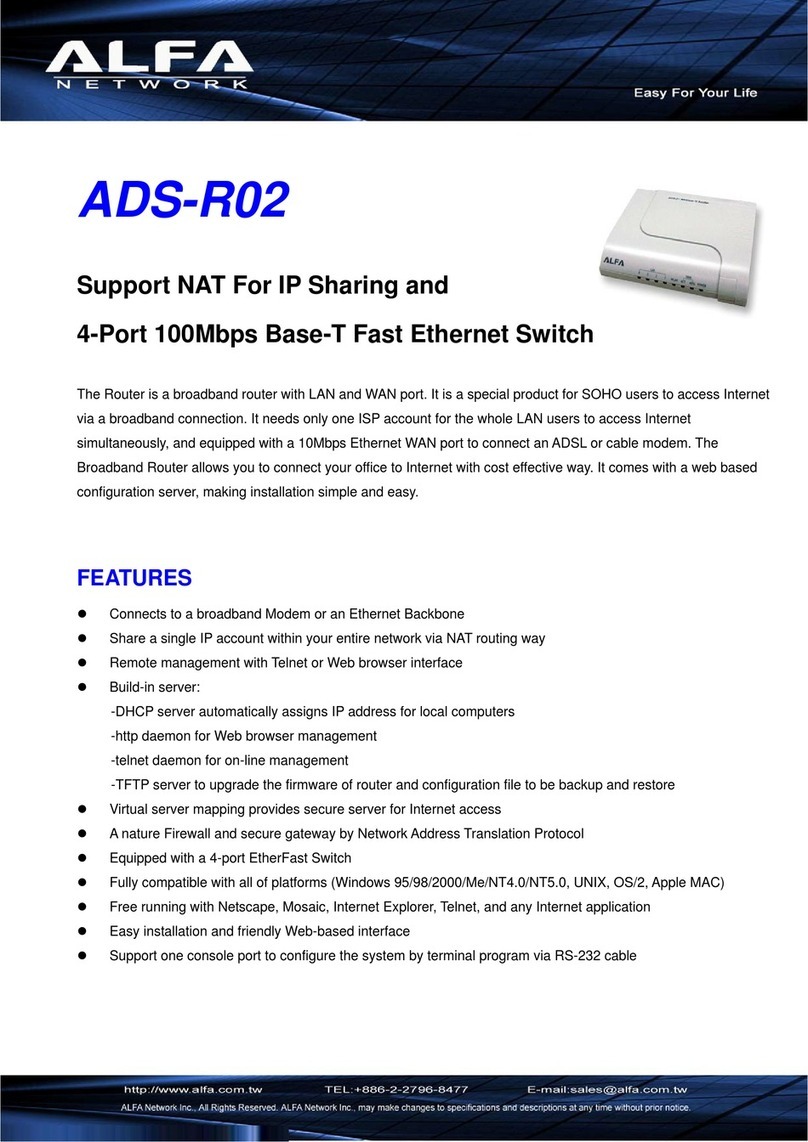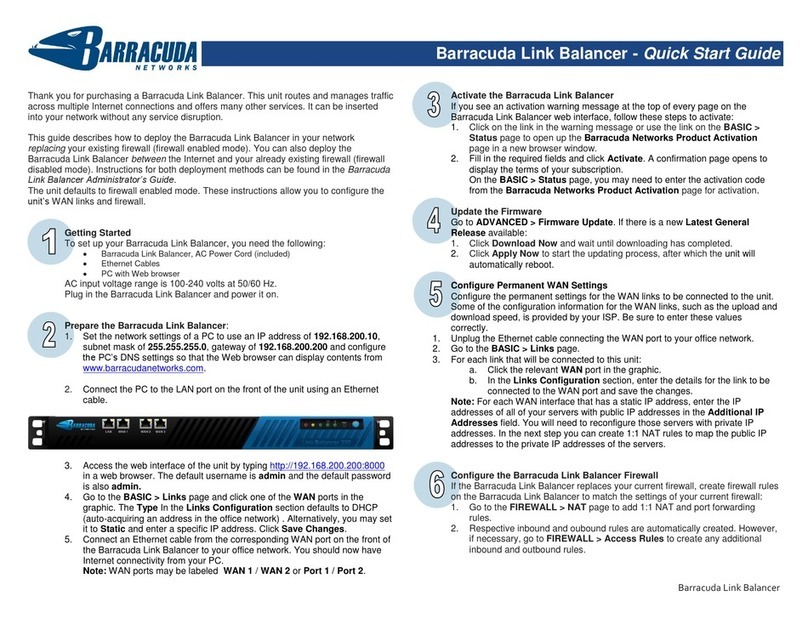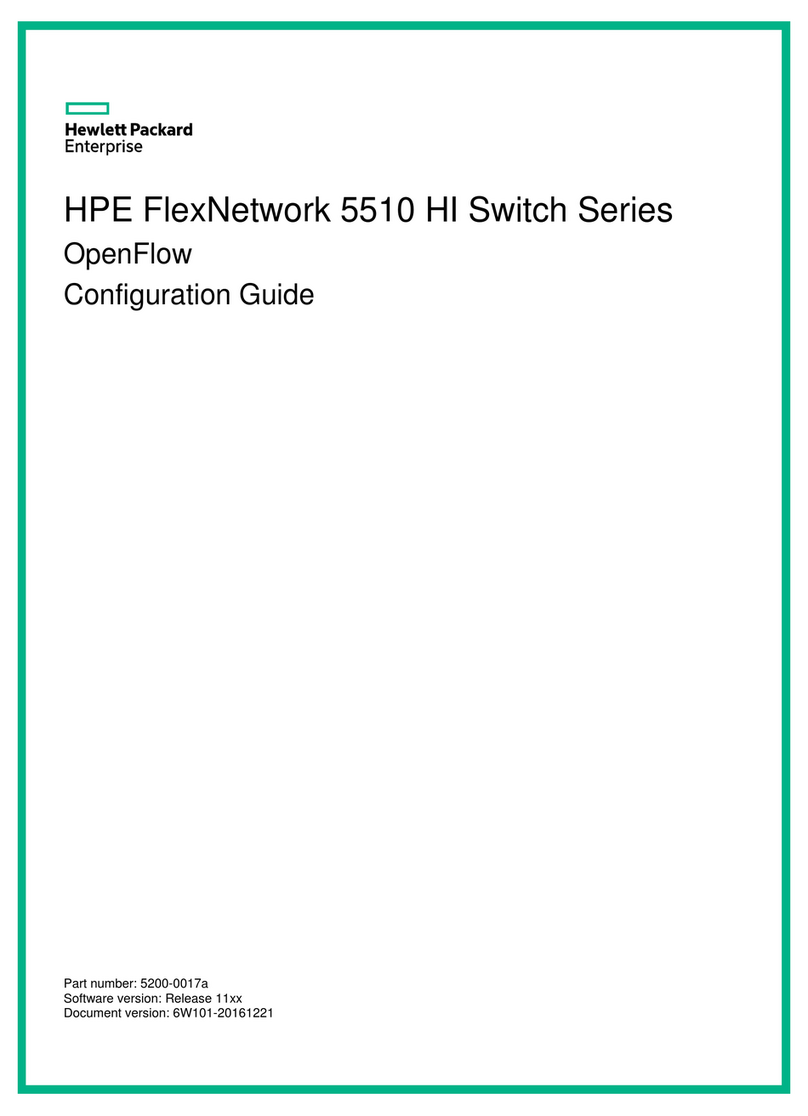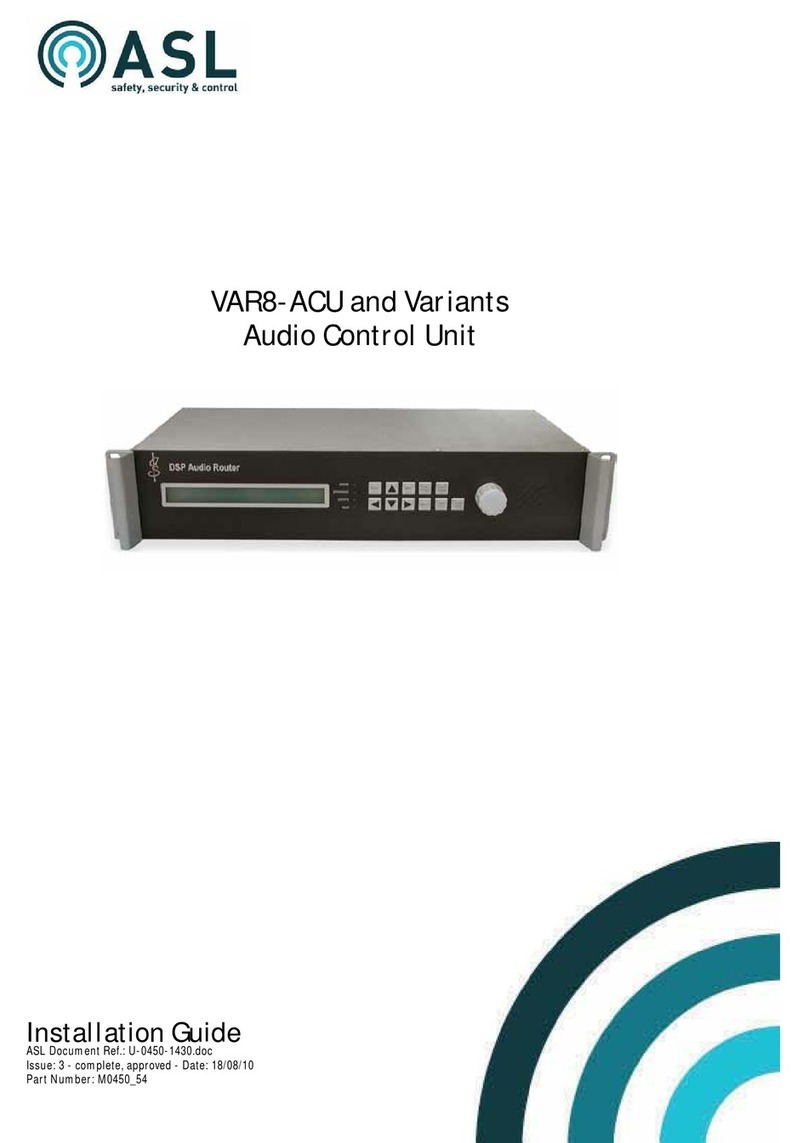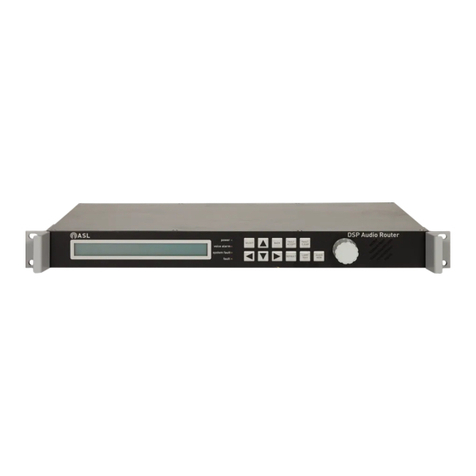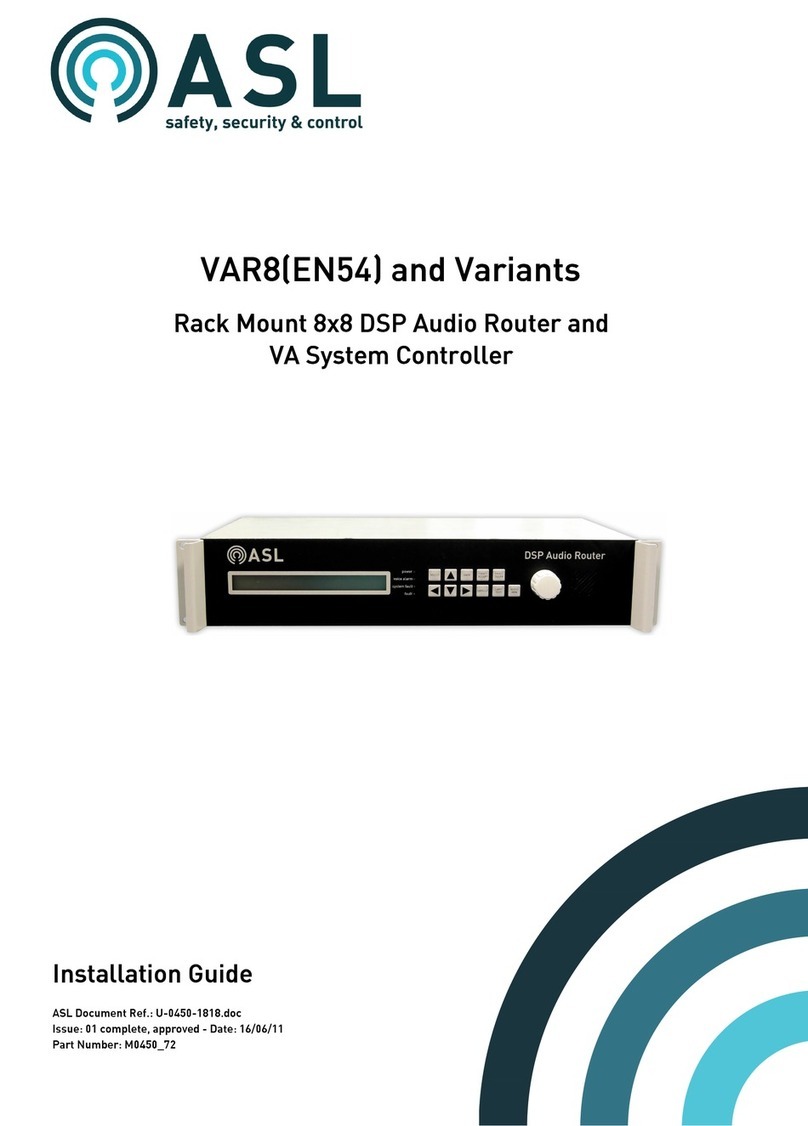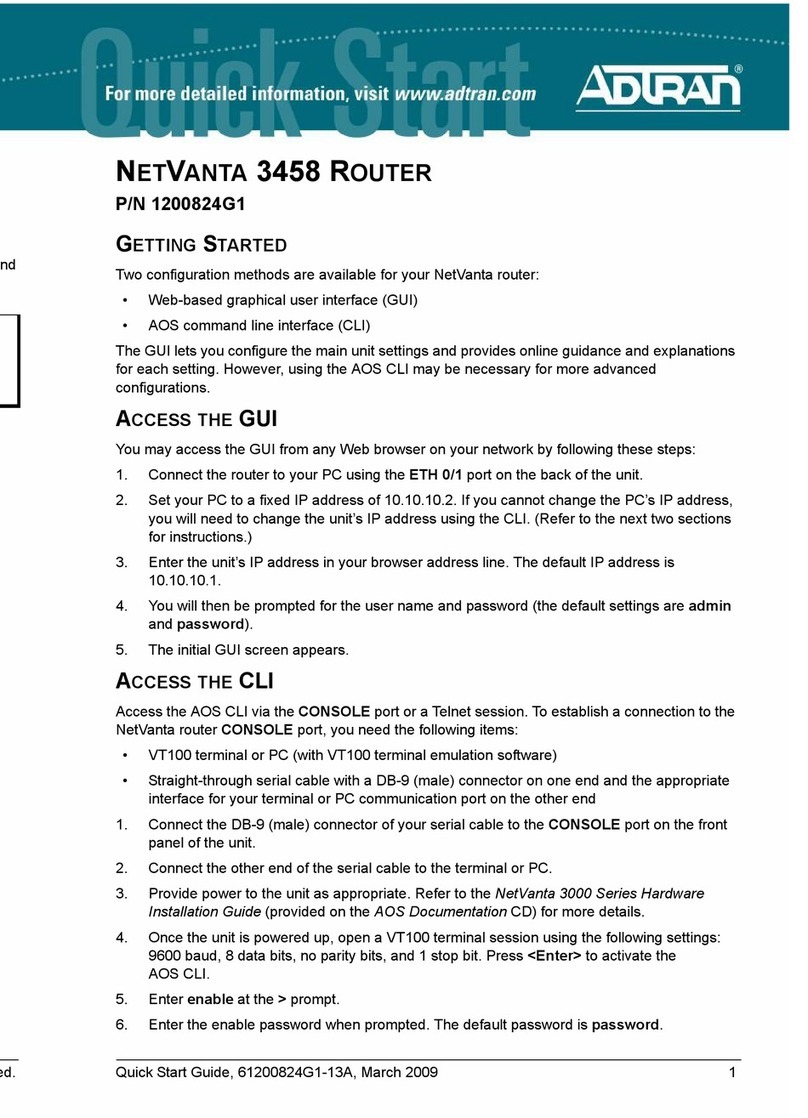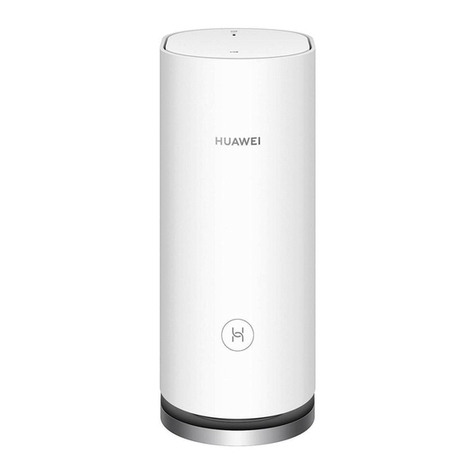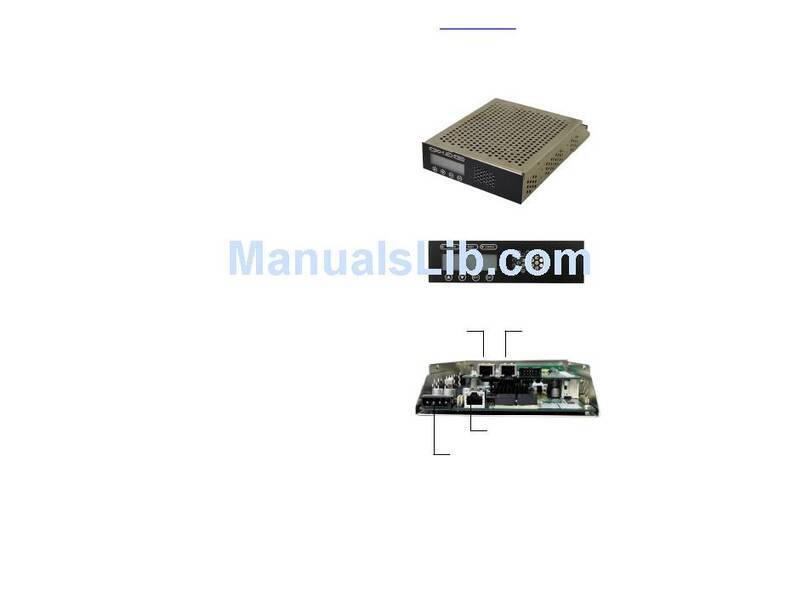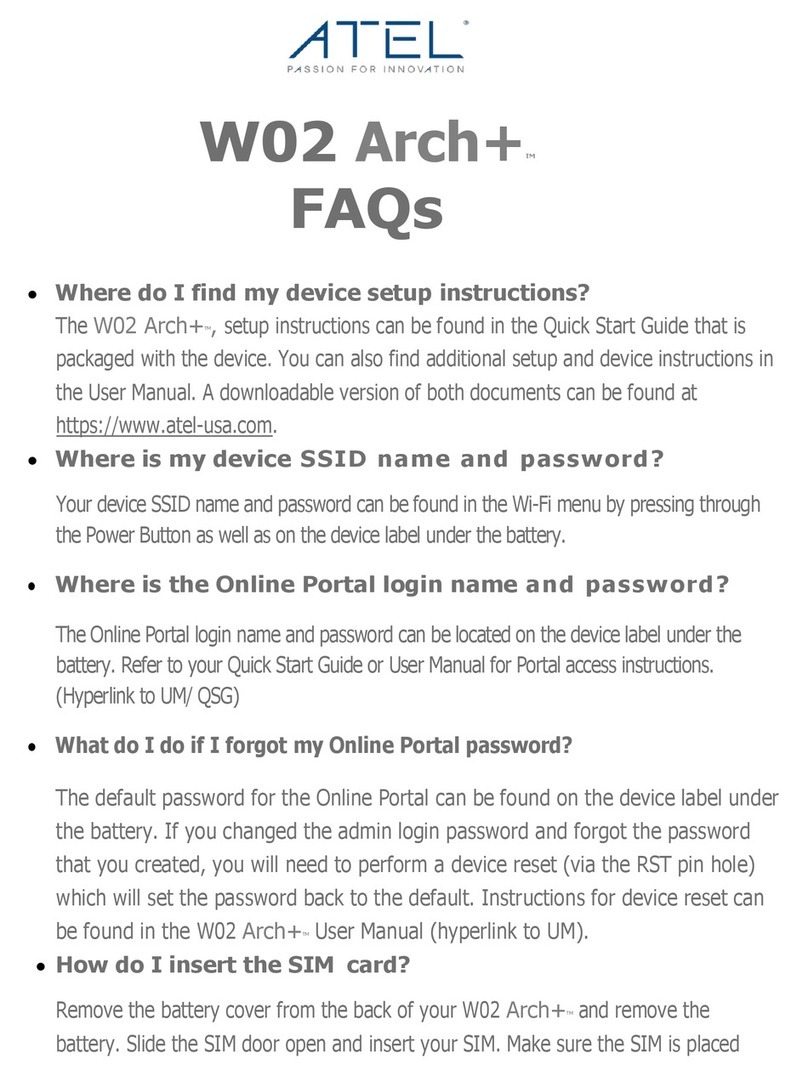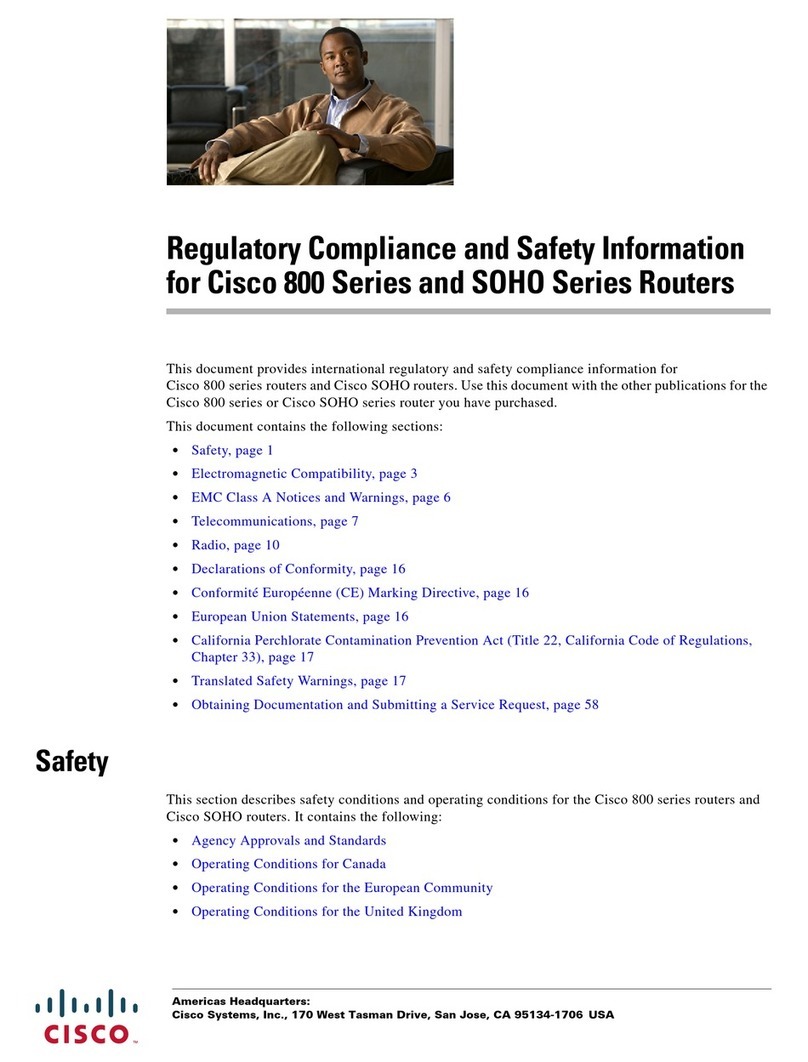VAR8 and Variants - Product Description
Issue: 02 complete, approved
Page 3 of 54
Contents
1Overview ................................................................................................................................................... 5
2Router Functions ................................................................................................................................... 10
2.1 Audio Inputs.............................................................................................................................. 10
2.1.1 Mic/Line Inputs.................................................................................................................. 10
2.1.1.1 Paging Microphone Mode ......................................................................................... 11
2.1.1.2 Fire Microphone (ALL-CALL) Mode .......................................................................... 11
2.1.1.3 Zoneable Fire Microphone Mode .............................................................................. 11
2.1.1.4 Single Button Microphone Mode............................................................................... 12
2.1.1.5 Miscellaneous Input Mode ........................................................................................ 12
2.1.1.6 Network Channel Mode............................................................................................. 12
2.1.1.7 Unused Mode............................................................................................................ 12
2.1.2 Digital Voice Announcers.................................................................................................. 13
2.1.3 Music Input........................................................................................................................ 13
2.1.4 Mute Input ......................................................................................................................... 13
2.2 Audio Outputs........................................................................................................................... 13
2.3 Audio Input Priority and Override ............................................................................................. 14
2.4 Fades and Chimes ................................................................................................................... 15
2.4.1 Fades ................................................................................................................................ 15
2.4.2 Chimes.............................................................................................................................. 15
2.4.3 Sequence of Events.......................................................................................................... 15
2.5 Surveillance Tone Detection and Generation........................................................................... 17
2.5.1 Detection........................................................................................................................... 17
2.5.2 Generation ........................................................................................................................ 17
2.6 Control ...................................................................................................................................... 17
2.6.1 Contacts............................................................................................................................ 18
2.6.1.1 Opto-Isolated Interface.............................................................................................. 18
2.6.1.2 Contact Functions ..................................................................................................... 19
2.6.1.2.1 Routing: Latching............................................................................................... 19
2.6.1.2.2 Routing: Non-Latching, Latent Routes .............................................................. 20
2.6.1.2.3 External Faults................................................................................................... 20
2.6.2 Permanent Routes............................................................................................................ 21
2.6.3 Remote I/O Units .............................................................................................................. 21
2.6.3.1 RS485 Connections .................................................................................................. 21
2.6.3.2 Remote I/O Unit Functionality Summary................................................................... 22
2.6.3.3 Analogue Inputs ........................................................................................................ 22
2.6.3.3.1 Programme Selector Operation......................................................................... 23
2.6.3.3.2 Volume Control Operation................................................................................. 23
2.6.3.3.3 Ambient Noise Sensors (ANS) .......................................................................... 24
2.6.3.4 Digital Inputs ............................................................................................................. 25
2.6.3.5 Digital Outputs........................................................................................................... 25
2.7 Night Time Volume Control ...................................................................................................... 26
3Network ................................................................................................................................................... 27
3.1 Network Operation.................................................................................................................... 27
3.1.1 Data Network ....................................................................................................................27
3.1.2 Audio Network...................................................................................................................27
3.2 Network Topology..................................................................................................................... 28
3.2.1 4x4 ACU Network Topology ............................................................................................. 28
3.2.1.1 System Parameters................................................................................................... 29
3.2.1.2 Main Network Features ............................................................................................. 29
3.2.2 8x8 ACU Network Topology ............................................................................................. 30
3.2.2.1 System Parameters................................................................................................... 30
3.2.2.2 Main Network Features ............................................................................................. 30
4Control and Indicators........................................................................................................................... 32
4.1 LCD Backlight Control .............................................................................................................. 33
5Fault Monitoring..................................................................................................................................... 34

